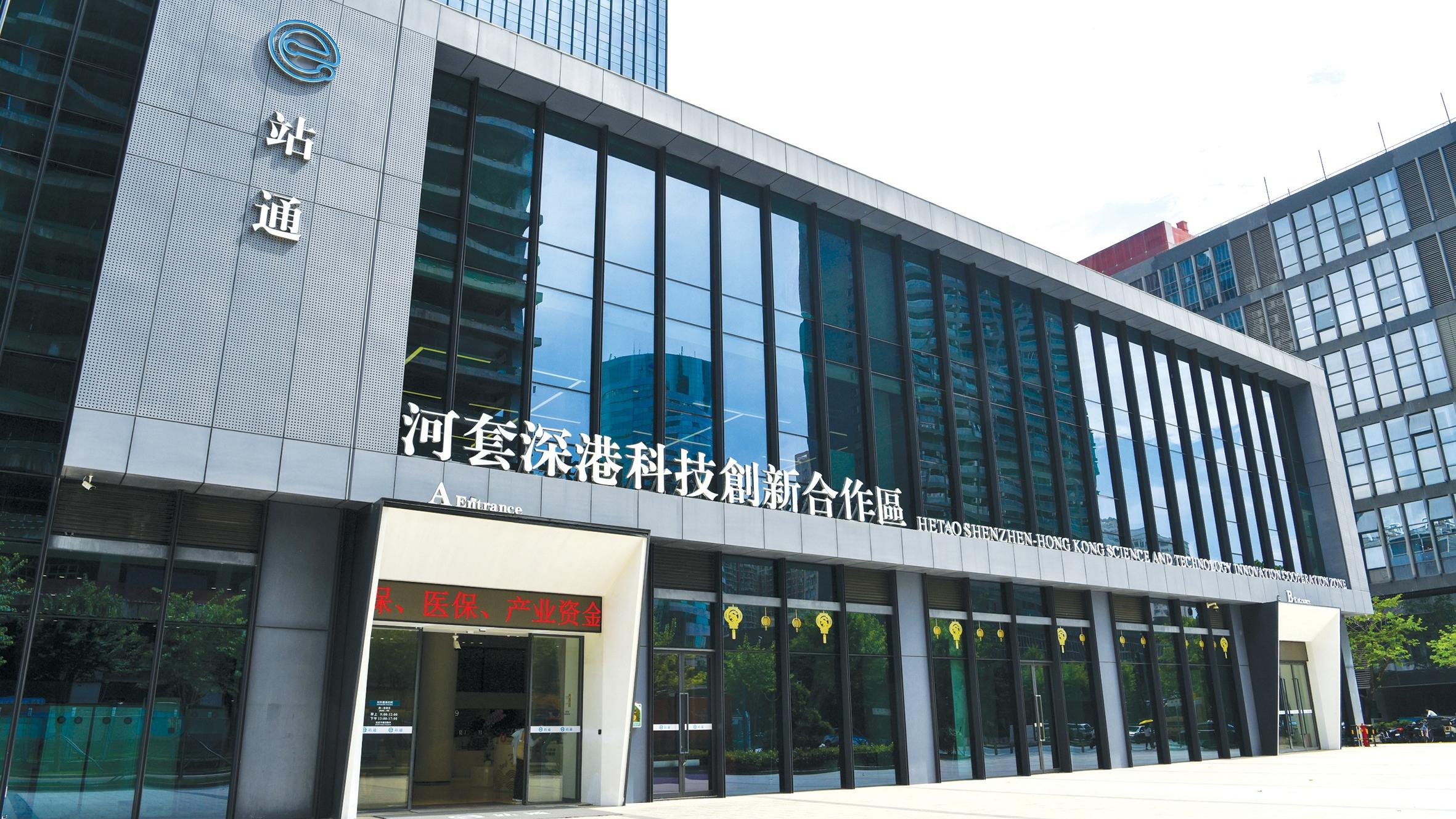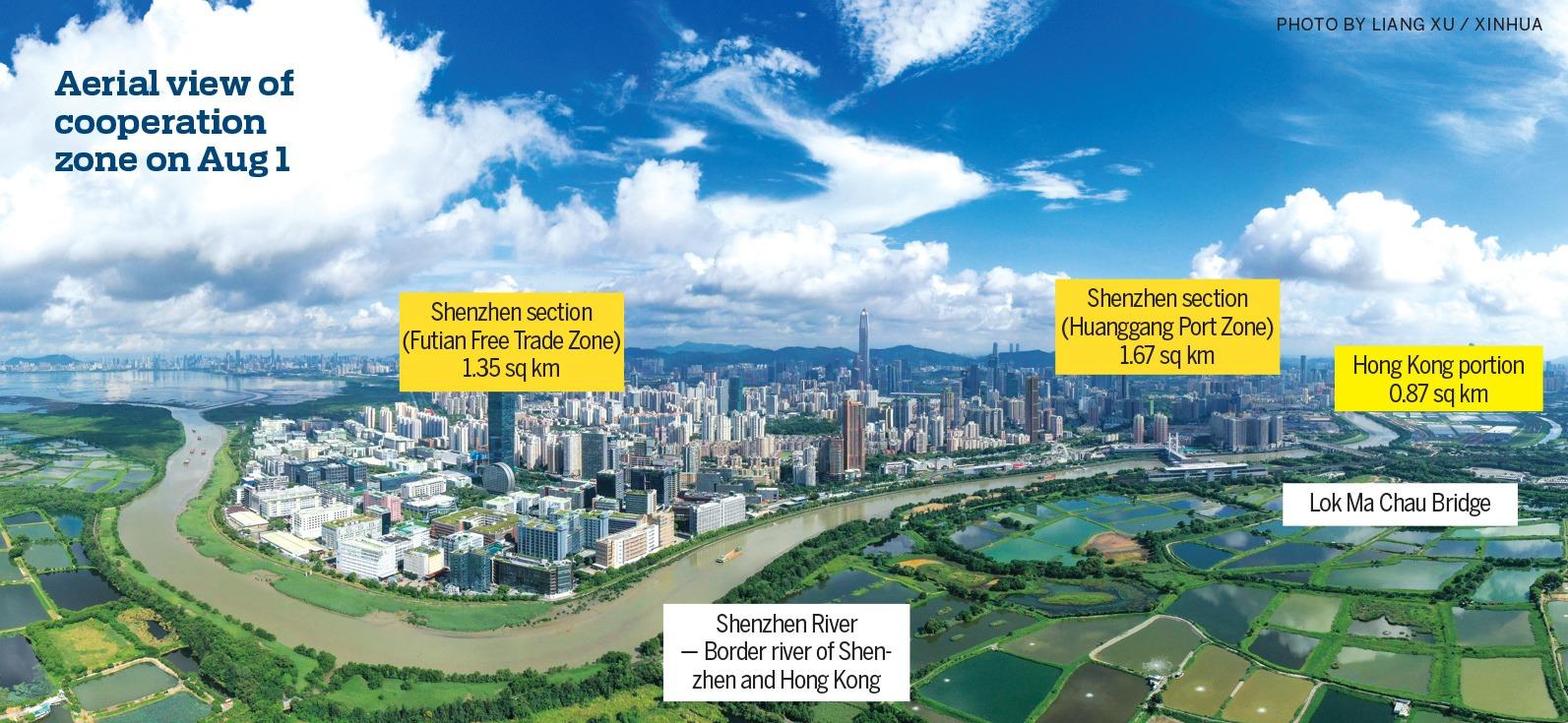Political and business heavyweights laud State Council announcement
 Residents and companies enjoy “one-stop” services from the cooperation zone’s Hetao “e-Station” service platform. (PHOTO / XINHUA)
Residents and companies enjoy “one-stop” services from the cooperation zone’s Hetao “e-Station” service platform. (PHOTO / XINHUA)
Scientists and experts from the Chinese mainland and the Hong Kong Special Administrative Region on Wednesday said that the well-considered development plan for the Shenzhen park, sitting adjacent to the border between Hong Kong and Shenzhen, is expected to facilitate scientific cross-boundary exchanges and provide a good living and working environment for professionals seeking to pursue a career in the 3.02-square-kilometer heart of innovation.
They urged Hong Kong to speed up construction of its portion of the cooperation zone, a 0.87-sq-km area at the Lok Ma Chau Loop, and to devise a better coordination strategy with Shenzhen to enhance the city’s technological competitiveness on the global stage.
Their comments came a day after the State Council released the “Development Plan for Shenzhen Park of Hetao Shenzhen-Hong Kong Science and Technology Innovation Cooperation Zone”. The zone — home to twin science parks bordering the two cities — spans about 3.89 sq km, and is being developed as a key economic driver with the potential to turn the region into a world-class innovation hub.
The development plan comprises 30 measures, including the positioning, objectives and overall layout of the cooperation zone’s Shenzhen section. The plan also lists an array of policies to ensure the flow in the chain of sci-tech innovation, and that the exchange of personnel between the zone’s two sections remain unimpeded. Through collaboration with Hong Kong, the plan is designed to ensure the Shenzhen section is more attractive to lab clusters as well as to research and development centers of leading enterprises.
Billy Zhong Fangxun, assistant director of the Hong Kong-Shen-zhen Innovation and Technology Research Institute (Futian) of the Chinese University of Hong Kong, was among those from the science sector who applauded the plan. His institute, which officially opened in March, is an eye-catching result of one of the cross-boundary projects made real in the cooperation zone.
Zhong said he noticed a proposal to build a new land checkpoint exclusively for people working in the zone, which would shorten travel time and boost efficiency for scientists and researchers who frequently need to cross the border.
 An aerial view of the Hetao Shenzhen-Hong Kong Science and Technology Innovation Cooperation Zone, on Aug 1, 2023. (PHOTO / XINHUA )
An aerial view of the Hetao Shenzhen-Hong Kong Science and Technology Innovation Cooperation Zone, on Aug 1, 2023. (PHOTO / XINHUA )
Zhong also welcomed the measures to explore the means by which data can be transported across the border within the zone. As a medical robots developer, Zhong said it is crucial for him and his team to be able to perform massive amounts of analysis on different medical imaging materials, such as images generated by computed tomography and nuclear magnetic resonance. However, there are still policy barriers that obstruct the cross-border use of these medical imaging materials.
Daniel Dai Rong, a doctoral research fellow from CUHK’s Futian research institute, said the plan’s proposal for a separate customs clearance mode inside the zone would benefit the cross-boundary transportation of scientific research equipment.
Dai recalled that customs clearance procedures took months when he sent a batch of scientific research equipment from Hong Kong to Shenzhen earlier this year. Dai believes a simplified procedure would greatly save time and energy for scientific researchers.
Chi Fulin, president of the China Institute for Reform and Development, said that the cooperation zone will amplify Shenzhen’s edge in innovative technology and contribute to Hong Kong’s economic transformation. Furthermore, he said the zone will be essential to enhance the city’s competitiveness and boost its chances of joining the Regional Comprehensive Economic Partnership, an intercontinental free-trade agreement that the special administrative region, as a separate customs territory, is seeking to join.
It will also benefit Hong Kong enterprises seeking to tap into the markets of RCEP members, especially those of Southeast Asian countries, Chi added.
Fang Zhou, research director of the One Country Two Systems Research Institute, said once Hong Kong’s San Tin Technopole is completed, the projects close to the Shenzhen-Hong Kong border will form a 6-sq-km “greater loop area” and house more top science and technology minds from both cities.
Fang cautioned that Hong Kong should not follow the traditional development model whereby developers usually seek tenants after their buildings have been completed. He suggested that the government grant land to companies and enterprises, allowing them to construct their own buildings to speed up the zone’s development.
Fang also said the Hong Kong and Shenzhen sections should further cooperate in management practices and industrial layout arrangements to make the cooperation zone a showcase for “one country, two systems” and an important engine for Hong Kong’s innovation and technology industry.


